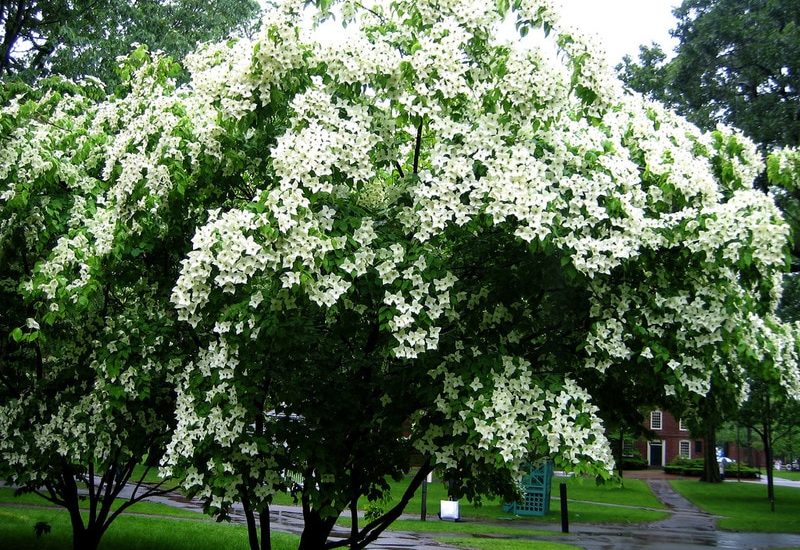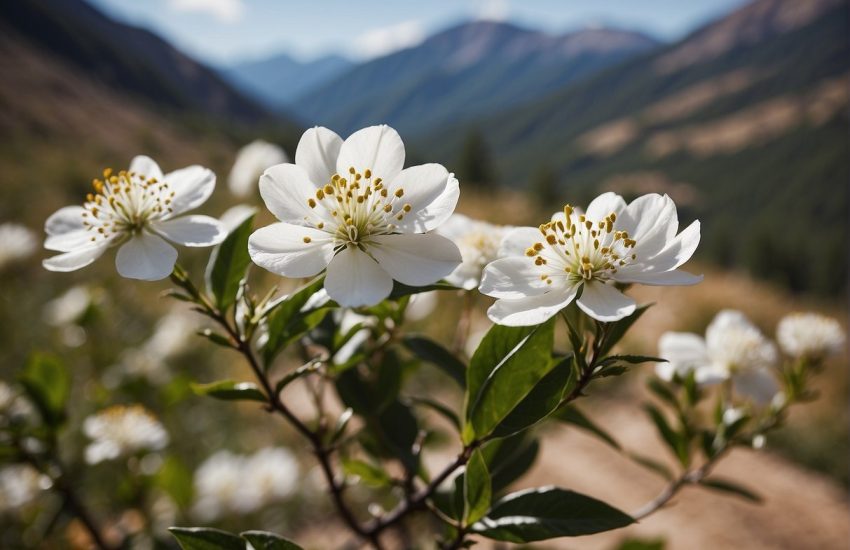Pink Flowering Trees in CT: A Guide to the Best Species for Your Garden
Connecticut is a beautiful state, especially during the spring season when pink flowering trees are in full bloom. These trees add a touch of color and beauty to the already picturesque scenery of the state. Pink flowering trees are a popular choice for homeowners and landscapers alike, as they provide a stunning display of color and fragrance.

Connecticut is home to a variety of pink flowering trees, including cherry blossoms, magnolias, and dogwoods. These trees can be found in parks, gardens, and along the streets of many towns and cities. The cherry blossom, in particular, is a favorite among residents and visitors alike, with its delicate pink petals and sweet fragrance.
Overall, pink flowering trees in Connecticut offer a delightful addition to the state’s natural beauty. With their stunning colors and fragrances, these trees are sure to capture the attention of anyone who appreciates the beauty of nature. Whether you’re a resident or a visitor, taking a stroll among these pink flowering trees is a must-do activity during the spring season.
Popular Pink Flowering Trees in CT
Connecticut is home to a variety of beautiful pink flowering trees that bloom in the springtime. Here are some of the most popular ones:
Eastern Redbud (Cercis Canadensis)
The Eastern Redbud is a small tree that can grow up to 30 feet tall. It is known for its heart-shaped leaves and clusters of pink flowers that bloom in early spring. The tree prefers moist, well-drained soil and partial shade. It is a popular ornamental tree in Connecticut due to its beautiful flowers and stunning fall foliage.
Pink Dogwood (Cornus Florida)
The Pink Dogwood is a medium-sized tree that can grow up to 25 feet tall. It is known for its beautiful pink flowers that bloom in early spring. The tree prefers well-drained soil and partial shade. It is a popular ornamental tree in Connecticut due to its stunning flowers and attractive bark.
Saucer Magnolia (Magnolia x Soulangeana)
The Saucer Magnolia is a small tree that can grow up to 20 feet tall. It is known for its large, saucer-shaped flowers that bloom in early spring. The tree prefers well-drained soil and full sun. It is a popular ornamental tree in Connecticut due to its stunning flowers and attractive foliage.
Crabapple Trees (Malus)
Crabapple Trees are a group of small to medium-sized trees that produce beautiful pink flowers in the springtime. They come in a variety of cultivars, each with their own unique characteristics. The trees prefer well-drained soil and full sun. They are a popular ornamental tree in Connecticut due to their beautiful flowers and attractive fruit.
Overall, these pink flowering trees are a beautiful addition to any landscape. They bring color and life to the springtime and are sure to impress anyone who sees them.
Caring for Pink Flowering Trees

Pink flowering trees are a beautiful addition to any landscape. They are low-maintenance trees that can thrive in a variety of soil and sunlight conditions. Proper care is essential to ensure that these trees remain healthy and produce beautiful blooms year after year. Here are some tips for caring for pink flowering trees:
Soil and Water Requirements
Pink flowering trees prefer well-drained soil that is rich in organic matter. It is important to ensure that the soil is not too wet or too dry. Overwatering can lead to root rot, while underwatering can cause the tree to wilt and die. It is recommended to water the tree deeply once a week, especially during hot and dry weather.
Sunlight and Shade Needs
Pink flowering trees require full sun to produce the most vibrant blooms. However, they can also tolerate partial shade. If the tree is planted in an area with too much shade, it may not produce as many blooms. It is important to ensure that the tree has access to at least six hours of direct sunlight each day.
Pruning and Maintenance
Pruning is an essential part of caring for pink flowering trees. It is recommended to prune the tree in late winter or early spring before new growth appears. Pruning helps to shape the tree and remove any dead or diseased branches. It also promotes healthy growth and encourages the tree to produce more blooms.
In addition to pruning, it is important to regularly inspect the tree for any signs of pests or disease. If any issues are detected, it is important to address them promptly to prevent further damage.
Overall, caring for pink flowering trees is relatively easy as long as the tree is planted in well-drained soil and receives adequate sunlight and water. With proper care, these trees can provide years of beauty and enjoyment to any landscape.
Seasonal Characteristics

Spring Blossoms
Pink flowering trees in Connecticut are a sight to behold during the spring season. These deciduous trees offer a stunning display of pink blooms that cover the entire tree. The flowers are usually fragrant and attract bees and other pollinators. Some of the popular pink flowering trees in Connecticut include the Eastern Redbud, Cherry Blossom, and Magnolia.
The Eastern Redbud is a small ornamental tree that produces pink or purple flowers in early spring before the leaves emerge. The tree is known for its heart-shaped leaves and attractive bark. The Cherry Blossom is another popular pink flowering tree that is known for its beautiful pink blooms that cover the entire tree. The tree is widely planted in parks and gardens across Connecticut. The Magnolia is a large deciduous tree that produces fragrant pink or white flowers in early spring. The tree is known for its large glossy leaves and attractive bark.
Autumn Foliage and Fruit
In addition to their spring blossoms, pink flowering trees also offer stunning autumn foliage and fruit. Many of these trees produce red fruit that is attractive to birds and other wildlife. The Eastern Redbud produces small red fruit that is edible but not commonly eaten by humans. The Cherry Blossom produces small black fruit that is also attractive to birds. The Magnolia produces a cone-like fruit that is bright red and attracts birds and other wildlife.
The autumn foliage of pink flowering trees is also a sight to behold. Many of these trees turn shades of yellow, orange, and red in the fall, adding to their overall beauty. The Eastern Redbud turns yellow in the fall, while the Cherry Blossom turns shades of yellow and orange. The Magnolia turns yellow before dropping its leaves in the fall.
In conclusion, pink flowering trees in Connecticut offer stunning seasonal characteristics that make them a popular choice for parks, gardens, and residential landscapes. From their beautiful spring blossoms to their attractive autumn foliage and fruit, these trees are a must-have for any nature lover.
Benefits of Planting Pink Flowering Trees

Pink flowering trees are a great addition to any garden landscape. They not only provide aesthetic value but also have environmental benefits. In this section, we will discuss the benefits of planting pink flowering trees.
Environmental Impact
Pink flowering trees have a positive environmental impact. They provide shade and help to reduce the amount of carbon dioxide in the atmosphere through photosynthesis. They also help to reduce erosion and improve soil quality.
Aesthetic Value
Pink flowering trees are known for their beautiful blooms. They add color and texture to any garden landscape. They can be used as focal points or as a backdrop for other plants. They also provide a fragrant aroma that can enhance the overall experience of being in the garden.
Wildlife Attraction
Pink flowering trees attract a variety of wildlife, including pollinators, butterflies, and hummingbirds. The flowers provide a source of nectar and pollen for these creatures, which is essential for their survival. They also provide shelter and nesting sites for birds and other wildlife.
In conclusion, planting pink flowering trees is a great way to enhance the beauty of your garden while also providing environmental benefits and attracting wildlife. Whether you are looking for shade, fragrance, or to attract pollinators, pink flowering trees are a great addition to any garden landscape.


